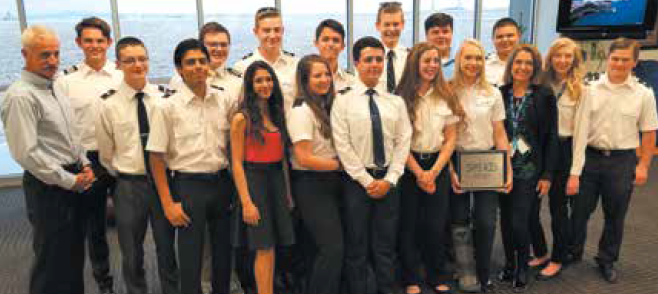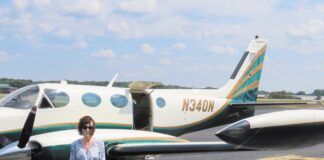One failure of GA in the U.S. is the dearth of young aviators, creating a pilot shortage. While many colleges and flight schools attempt solutions, there’s just not a big demand.
First, blame the media. Aviation is not as exciting as it was in the 1950s. In that era, every few months there was a new speed or altitude record. The jet age was so prevalent that it influenced car styling, and there were many new innovative and exciting aircraft.
Then, of course, there’s the cost of pilot training that is often the prohibiting factor for many aspiring flyers. Only military aviation lowers that, but it demands other costs.
While the excitement of media-reported events is important, how can a person experience the reality of flight with sights and sounds that exhilarate the senses? Enter organizations such as the EAA, Civil Air Patrol (CAP), and other aviation-oriented groups offering to acquaint the general populace with flight and to mitigate (to some extent) the expense.
Since only one in every 600 people in the U.S. is an aviator, there are few opportunities for a young person to meet a pilot. As for CAP, there are only 25,000 cadet members (ages 12-18), the same number as 65 years ago when I joined—despite the U.S. population having doubled. Compare this with the five million in Scouting—CAP continues to be a well-kept secret.
Over the past five years I became involved with a STEM-based charter school. I taught its ground school, and served on the board of Southwest Aeronautics, Mathematics, and Science (SAMS) Academy in Albuquerque. As its name implies, SAMS Academy provides an aviation curriculum for high school students as a primary, but not exclusive, educational theme. Many of the sciences can be found within the exciting and stimulating realm of learning to fly. Other areas that are explored include maintenance, air traffic control, and engineering.
Now, having moved to Florida, I am promoting creation of a similar charter school to encourage more of our youth to take to the air. The typical charter school also requires greater parental interaction in the curriculum—an aspect that has sorely suffered over the past half-century.
While charter schools are only five percent of publicly funded schools, what about the other 95 percent? CAP has a Teacher Orientation Program. Sometimes called “Fly a Teacher” it is a Saturday devoted to a morning classroom session illustrating how aviation and space topics can be used in the classroom to acquaint teachers with that environment and how it can motivate students to consider aerospace careers. The afternoon allows each of the 20 or so teachers to fly in a CAP aircraft to see firsthand the eye-opening excitement of flight. Local CAP squadrons may also provide guest speakers to public schools.
Let me encourage IFR Magazine readers to become involved by reaching out to your community to share your knowledge, skills, and enthusiasm with a new generation.





